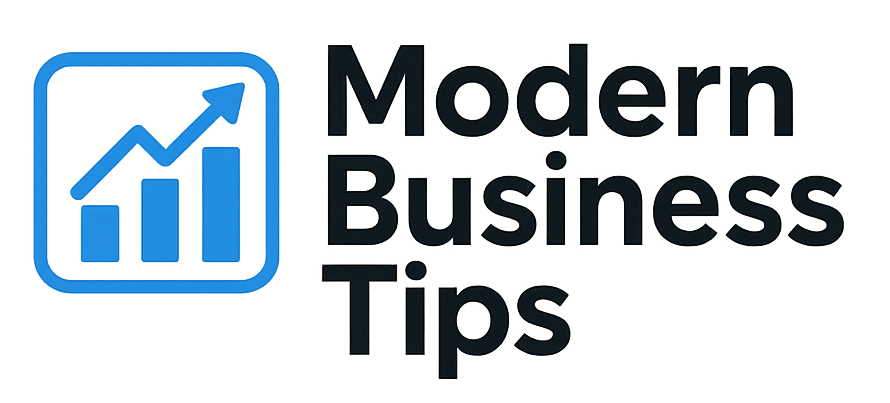What if the secret to your business growth is not in chasing the next big sale? It’s in building long-term customer relationships through recurring revenue. Many entrepreneurs are stuck in a cycle of one-off transactions. They don’t realize their business’s true power lies in a solid subscription model.
Switching to a customer retention strategy can turn your business around. CEO Kim Folsom shares how recurrent income is key. Discover how ongoing revenue streams can make your finances stable and lead to lasting success.
Key Takeaways
- Recurring revenue creates predictability and stability for your business.
- Transitioning to a subscription business model shifts the focus from immediate sales to long-term relationships.
- Customer retention strategies foster a reliable cash flow and business health.
- Understanding the value of recurrent income can lead to transformative growth opportunities.
- CEO Kim Folsom emphasizes the importance of adapting to recurring revenue for small businesses.
- Chasing one-off sales limits business growth; integrating subscriptions opens new avenues.
Understanding Recurring Revenue: What It Is and Why It Matters
In today’s business world, knowing about recurring revenue is key for growth. This model brings in steady income from ongoing customer ties. It helps businesses manage money better and keep customers loyal.
Definition of Recurring Revenue
Recurring revenue is money made from customers over and over, often through contracts or subscriptions. It comes from things like monthly fees, yearly memberships, or service deals. With recurring revenue, companies can count on steady money and plan better.
Common Types of Recurring Revenue Models
Many industries show the strength of recurring revenue. Here are a few examples:
- Software as a Service (SaaS) platforms, where users pay for software access.
- Membership websites that offer special content for a fee.
- Subscription boxes, sending out products to customers regularly.
Advantages of Recurring Revenue for Businesses
Using recurring revenue has many benefits for companies. It makes income more predictable, helping with money management. It also helps keep customers longer, boosting their value over time.
Brands like Amazon and Costco use subscriptions to keep customers coming back. This approach helps businesses grow in a stable and lasting way.
How Recurring Revenue Impacts Cash Flow
Recurring revenue models bring big benefits, like better cash flow management. They create steady income, making financial planning easier. This stability is key for long-term growth.
Predictability in Income Streams
Recurring income is very predictable. Regular payments help me plan my cash flow well. This predictability lets businesses plan better, whether for new tech or marketing.
Planning for Growth with Recurring Revenue
Steady income makes financial planning simpler. Companies can plan for growth, hiring new talent or developing products. Knowing what income to expect helps plan for the future.
Balancing Fixed vs. Variable Costs
Managing cash flow means knowing fixed and variable costs. Recurring income helps cover fixed costs, easing financial pressure. This balance keeps finances healthy, even when markets change.
The Challenges of Implementing a Recurring Revenue Model
Switching to a subscription model comes with its own set of hurdles. Finding the right market is a big challenge. Knowing your customer base well is key; targeting the wrong audience can lead to high churn rates. This can hurt your customer retention efforts.
It’s important to make sure your subscription meets customer needs and expectations. This is the first step towards building lasting relationships with your customers.
Identifying the Right Market Fit
Finding the right audience is critical for a successful subscription model. Market research helps create services that appeal to consumers. If your product doesn’t match what customers want, you risk losing them.
Managing Customer Retention
Keeping customers is at the heart of a successful subscription business. It’s all about maintaining strong relationships with your clients. This ensures that recurring billing stays profitable.
Building customer loyalty is essential. This includes personalized communication, top-notch customer service, and regular feedback. These efforts help keep customers engaged over time.
Overcoming Initial Investment Barriers
Starting a subscription model requires a big upfront investment in technology and infrastructure. This can be a challenge, even for startups. Businesses need to plan their budgets carefully.
They should consider investing in subscription management software. The right tools help manage customers better and make the transition smoother.
Metrics That Matter in Recurring Revenue
To check if a recurring revenue model works, I look at key metrics. These help make decisions and shape strategies. They give a clear view of how well a business is doing.
Key Performance Indicators (KPIs)
Key Performance Indicators are vital for measuring success in recurring revenue. I track customer acquisition cost, average revenue per user, and monthly recurring revenue. Monthly recurring revenue shows how much money comes in each month. This helps predict growth and plan resources better.
Churn Rate and Customer Lifetime Value
Knowing the churn rate is key to keeping customers. A high churn rate means there might be issues with satisfaction or product fit. I also look at customer lifetime value. This shows how much money a customer brings in over time. Boosting customer lifetime value helps increase revenue through upselling and cross-selling.
Analyzing Monthly Recurring Revenue (MRR)
Looking at monthly recurring revenue helps see how a business is doing. MRR shows if subscriptions are growing or shrinking. By checking MRR often, I spot trends and make strategy changes as needed.
| Metric | Importance | Actionable Insight |
|---|---|---|
| Monthly Recurring Revenue | Predicts income stability | Enhances budgeting and forecasting |
| Churn Rate | Indicates customer retention | Identifies areas for improvement |
| Customer Lifetime Value | Measures overall customer profitability | Guides marketing and sales strategies |
Strategies to Attract Recurring Revenue Customers
To attract customers for subscription services, businesses need creative strategies. They must make offers that grab attention and keep customers engaged. By doing this, they show the value of a subscription, helping to keep customers coming back.
Creating Compelling Offers
Businesses should make their subscription plans stand out. They can offer trials or special deals to get people interested. Highlighting the long-term benefits and using customer testimonials can build a strong connection with customers.
This approach can turn one-time buyers into loyal subscribers. It helps create a steady stream of income.
Leveraging Digital Marketing Techniques
In today’s market, using targeted ads and digital marketing is key. Social media can create excitement around a service, while email marketing can speak directly to customers. By analyzing how well campaigns work, businesses can improve their efforts to attract more customers.
Building Strong Relationships with Customers
Keeping customers happy is vital for keeping them. Personalized messages and feedback show you care about their satisfaction. Great service builds loyalty, benefiting both the customer and the business.
By focusing on building strong relationships, companies can keep customers engaged. This helps maintain a steady income stream over time.
The Role of Technology in Recurring Revenue
Technology plays a big role in making recurring revenue models work better. With the right tools, businesses can handle subscription management smoothly. This leads to happier customers and more efficient operations.
Subscription Management Software
Using subscription management software makes billing automatic. It helps companies collect payments without hassle. This lets them focus on improving customer service.
Features like automated invoices and updates save time and cut down on mistakes. It’s a big help for businesses.
Using Data Analytics for Insights
Data analytics is key to understanding what customers want. By looking at what they buy and how they interact, businesses can make better products. This makes marketing more effective and keeps customers coming back.
Automation and Its Benefits
Automation in subscription management makes things easier. It handles renewals and reminders without needing a person. This saves time and reduces mistakes.
Customers get timely updates, making their experience better. It’s a win-win for everyone.
Retaining Customers for Long-Term Success
Keeping customers is key for lasting income in any business, like membership sites or subscription services. Making customers feel valued through great service builds loyalty. Companies that focus on keeping customers happy have lower rates of losing them and earn more over time.
Creating a plan to keep customers loyal is important for success in a competitive market. It helps businesses grow and stay ahead.
Building Loyalty Through Customer Service
Good customer service builds loyalty. Personalized and quick help makes users happy and keeps them coming back. I’ve seen that quick and friendly responses to questions make customers feel connected, leading to more business.
Implementing Feedback Mechanisms
Listening to what customers say is essential. Surveys, feedback forms, and direct talks help find what needs work. This feedback shapes the plan to keep customers, making sure what’s offered meets their needs.
Changes based on customer feedback can greatly improve the experience on membership websites.
Continuous Improvement and Updates
Keeping services or products fresh and relevant is important. Staying up-to-date with market changes keeps customers interested. By always improving, companies show they care about customer happiness, which is key for keeping customers long-term.
Being open to customer feedback leads to more loyalty and a steady income stream.
| Strategy | Description | Benefits |
|---|---|---|
| Customer Service Excellence | Provide prompt and friendly support. | Increases trust and satisfaction. |
| Feedback Collection | Utilize surveys and direct feedback. | Identifies improvement areas and adapts offerings. |
| Regular Updates | Enhance services based on market trends. | Keeps offerings relevant and engaging. |
Case Studies: Brands Thriving on Recurring Revenue
Many brands have found success with subscription services. They’ve seen how these services bring in steady income and keep customers coming back. This shows that different types of businesses can benefit from this approach.
Successful SaaS Companies
Big names in software, like Microsoft and Adobe, have changed how they sell. They now offer subscriptions instead of one-time buys. This move has increased their earnings and made customers happier with regular updates and support.
Subscriptions mean customers always get the newest and best tools. This keeps them engaged and loyal to the brand.
Membership Programs Revamping Businesses
Membership programs are also a hit for making money over and over. Costco and Amazon Prime are great examples. They give members special perks like discounts and free shipping.
These benefits keep customers coming back. They feel they’re getting great value, which makes them more loyal to the brand.
Subscription Boxes and Consumer Trends
Subscription boxes have become very popular. They offer a fun way to get new things every month. Companies like Birchbox and Loot Crate send out boxes filled with cool stuff.
This model meets the demand for unique experiences. It also keeps customers excited with each new box.
These examples show how versatile recurring revenue can be. Whether through software, memberships, or boxes, brands are finding success. They’re using subscriptions to make more money and keep customers happy.
| Company | Model Type | Key Benefits |
|---|---|---|
| Microsoft | SaaS Subscription | Regular updates, continuous access |
| Amazon Prime | Membership Program | Exclusive deals, free shipping |
| Birchbox | Subscription Box | Personalized selections, monthly excitement |
Avoiding Common Pitfalls in Recurring Revenue Models
Switching to a subscription model can be tough. It’s key to spot and fix these problems to grow. Getting pricing wrong and not listening to customers can hurt your income and business health.
Misjudging Pricing Strategies
Setting the right price is tricky. If it’s too high, people might not sign up. But if it’s too low, they might not see the value. Prices should be based on what the market says, what others charge, and what customers are willing to pay.
Ignoring Customer Feedback
Customer feedback is gold. Not listening to it can make people unhappy. Talking to customers often can build loyalty and keep your income steady.
Changing prices and listening to customers are key to avoiding common mistakes. By keeping an eye on prices and what customers say, you can make your service better and succeed in the long run.
| Pitfall | Consequences | Solutions |
|---|---|---|
| Misjudging Pricing Strategies | Loss of possible customers or services seen as cheap | Do market research and adjust prices based on what customers think they’re worth |
| Ignoring Customer Feedback | Customers get unhappy and less loyal | Always ask for and use customer feedback |
The Future of Recurring Revenue
Looking into the future, recurring revenue is set to change. New business models will be key in this shift. Old ways are giving way to personalized experiences and digital solutions.
The gig economy is growing fast. Businesses must quickly adapt to these changes. This makes the subscription model more important than ever.
Evolving Business Models
Today, businesses need to be flexible and quick to respond. They must understand the market and what customers want. Companies like Adobe and Netflix have made the switch to subscriptions.
They keep innovating and adding value for their customers. This shows how important it is to adapt to new ways of doing business.
Trends Shaping Recurring Revenue Practices
Automation and data analytics are big trends in recurring revenue. Technology helps companies offer personalized services. This makes customers happier and more likely to stay.
Being able to tailor experiences boosts retention rates. This ensures steady income in a competitive market.
Preparing for Subscriptions in Various Industries
Businesses in all sectors need to get ready for subscriptions. They should focus on solving customer problems and improving their experience. This approach will bring immediate benefits and build lasting customer loyalty.



